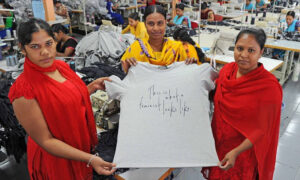The Heart of the Matter: Why Commercial Drive?
Commercial Drive, often referred to affectionately by locals as “The Drive”, has always been a buzzing hub for a mix of cultures, ideas, and grassroots movements. Known for its vibrancy, this is where Vancouverites of all backgrounds come to eat, shop, or simply enjoy the eclectic vibe. When a men’s rights campaign emerged on this very street, it was bound to make waves.
Historically, The Drive has been a haven for progressive movements and a stage for activism. From women’s rights to environmental causes, there’s no shortage of advocacy. So, when a group chose this street as their venue to voice concerns about men’s rights, it was, in many ways, adding another layer to the rich tapestry of social discourse that Commercial Drive is renowned for.
The Backbone of the Campaign: Men’s Rights in the Modern World
Men’s rights is a topic that has been gaining traction worldwide. In the simplest terms, it focuses on addressing the issues that disproportionately affect men, such as higher workplace deaths, custody battles, and mental health stigma. However, like many movements, it’s multi-faceted and can sometimes be misconstrued.
- Mental Health Matters: Men, traditionally, have been conditioned to suppress their emotions. This has contributed to an alarming rate of male suicides. Advocates argue that there’s a dire need for more male-centric mental health resources and destigmatizing male vulnerability.
- Fair Shake in Custody Battles: Another contentious issue is the perceived bias against fathers in child custody cases. Men’s rights activists push for equitable consideration in these scenarios.
- Workplace Concerns: Men dominate certain high-risk jobs, and this has led to higher fatalities. Advocates ask for better safety measures and recognition.
These are just the tip of the iceberg. The complexity is vast, but the essence is clear: advocating for a world where men, too, can voice their vulnerabilities without backlash.
The Stir on The Drive: A Heated Debate

With such a charged topic, Commercial Drive became a ground zero of sorts. The campaign was met with mixed reactions. While many supported the cause, others viewed it with skepticism, fearing it might undermine other crucial movements, notably women’s rights.
Local cafes and boutiques witnessed heated discussions. “Isn’t it about time we recognized men’s issues too?” one might overhear at a coffee shop, only to be met with, “But is this the right way? Is The Drive the place for this?” from a neighboring table. The dialogue was unending, with both sides presenting valid arguments.
Perspectives from Beyond The Drive
To get a holistic view, let’s step out of the Vancouver bubble for a moment.
Internationally, the men’s rights movement has faced criticism. Some argue that it’s reactive, emerging only in response to the rise of feminism. Others say it’s essential, shedding light on overlooked societal issues.
Renowned author John Doe, in his book “Masculinity in the 21st Century,” comments, “[Men’s rights] isn’t about negating feminism. It’s about co-existing with it, ensuring every gender has its voice heard.” This sentiment echoes the feelings of many on Commercial Drive, suggesting a potential for unity amidst the conflict.
Bridging the Gap: Finding Common Ground
The key here, as with any polarizing issue, might be to find a middle ground. Commercial Drive, with its history of activism and acceptance, could be the perfect place for this reconciliation.
The men’s rights campaign on The Drive has sparked intense debates, reflective of the broader global discourse. However, the real opportunity lies in channeling this energy. By fostering understanding, perhaps The Drive can once again lead the way, showing that multiple movements can coexist, thrive, and even support each other.
In the end, isn’t that what activism on Commercial Drive has always been about? Creating a world where every voice matters, where every issue gets its due spotlight, and where we all move forward together, in harmony.





